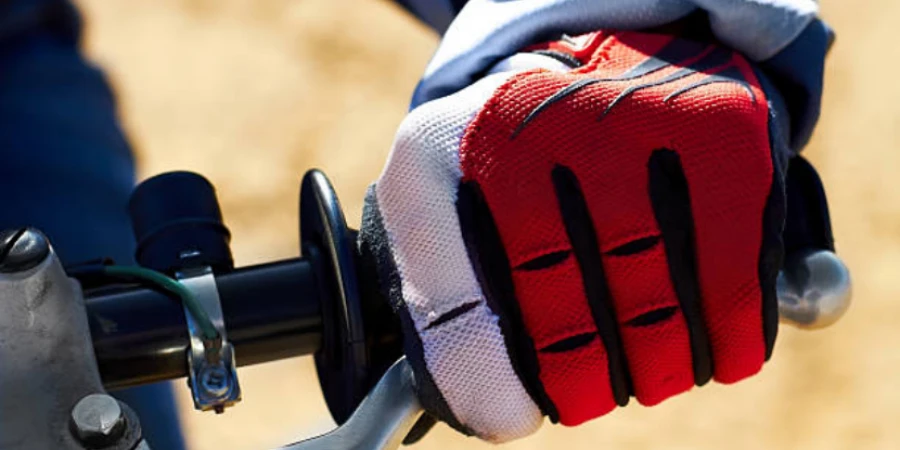In the realm of high-speed pursuits, racing gloves emerge as a pivotal element, enhancing both performance and safety for those at the helm. These specialized gloves are engineered to provide a superior grip, mitigate vibration, and shield hands from the perils of intense racing conditions. With materials ranging from durable leather to advanced synthetics, each pair is a testament to innovation, designed to meet the rigorous demands of various racing environments. As industry professionals explore the latest advancements and models, understanding the nuanced benefits of these gloves becomes essential. This knowledge not only informs purchasing decisions but also ensures that the chosen gear aligns with the specific needs and safety standards of their racing teams or clientele.
Table of Contents:
1. Varieties and applications of racing gloves
2. 2024 racing gloves market snapshot
3. Key considerations for choosing racing gloves
4. Spotlight on top racing gloves and their features
5. Concluding thoughts
Varieties and applications of racing gloves
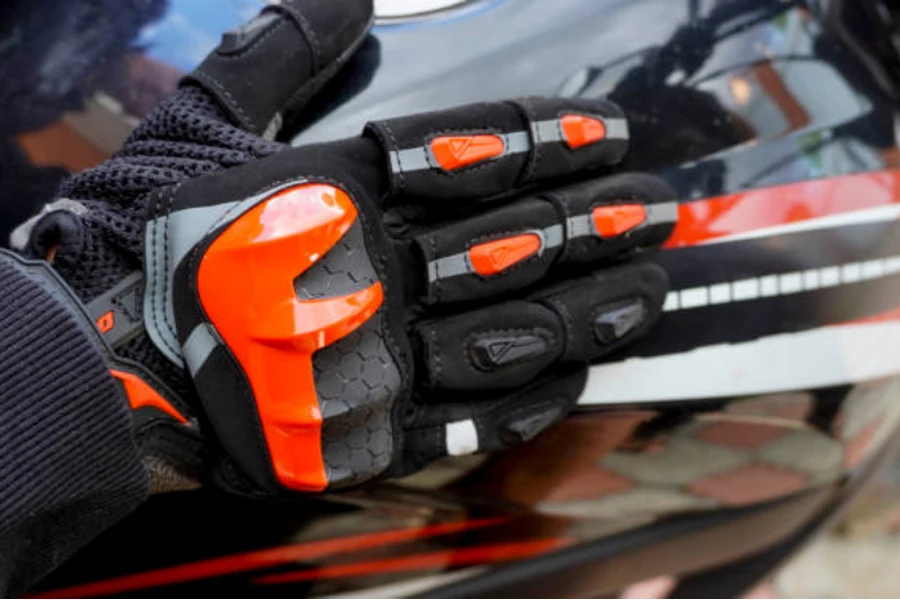
Diverse types across disciplines
The spectrum of racing gloves mirrors the diversity of the racing world itself, with each type tailored to the specific demands of different racing disciplines. In the realm of motorcycle racing, gloves like the Dainese Full Metal 6 and Alpinestars Supertech are revered for their robust protections, such as titanium and carbon fiber inserts, which are crucial in a sport where the hands are often the first line of defense during a fall. These gloves are designed to offer maximum grip and dexterity, allowing for precise control over the bike’s handlebars and levers.
In contrast, auto racing gloves prioritize a blend of sensitivity and protection to enable drivers to maintain a firm grip on the steering wheel while also safeguarding against fire and abrasion. Models like the Alpinestars Tech-1 ZX V2 and OMP One Evo X stand out in this category, offering features like pre-curved fingers and palm support for enhanced comfort and control. The materials used are often flame-resistant and lightweight, providing a balance between safety and performance.
Sim racing, a rapidly growing sector, demands gloves that replicate the real-life experience while catering to the unique context of virtual racing. Gloves such as the Alpinestars Tech 1-K Race V2 and K1 Race Gear RS1 are popular among enthusiasts for their tactile feedback and breathability, enhancing the immersive experience of sim racing.
Functional uses and benefits
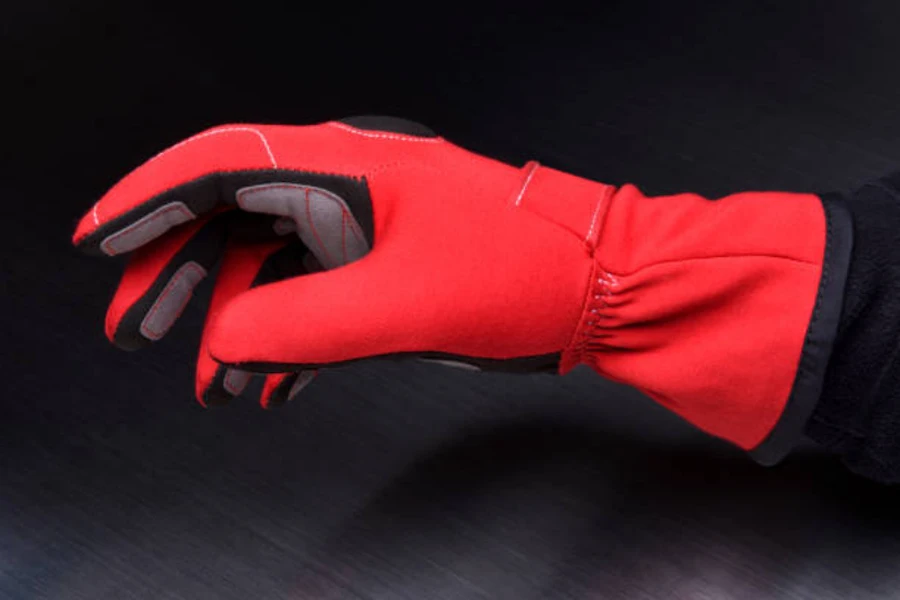
The functional uses and benefits of racing gloves extend beyond mere hand protection. They are a critical component in the driver’s arsenal, affecting everything from safety to performance. The primary function is to provide a superior grip, which is vital in high-speed scenarios where even a slight slip can lead to loss of control. Materials like leather and silicone are commonly used on the palms and fingers to enhance grip and tactile feel.
Protection is another paramount concern, especially in high-risk disciplines like motorcycle racing. Advanced gloves incorporate materials and designs that protect against impacts, abrasion, and extreme temperatures. Features like knuckle protectors, padded palms, and reinforced stitching are standard in high-end models, offering a shield against common injuries.
Comfort and ergonomics play a significant role in a racer’s endurance and focus. Gloves designed with pre-curved fingers, breathable fabrics, and adjustable closures ensure a snug fit without restricting movement. This not only reduces hand fatigue but also allows for more precise and controlled movements, which can be the difference between winning and losing.
In conclusion, the selection of racing gloves is a nuanced decision that reflects the specific needs and challenges of the racing discipline. Whether for motorcycle, auto, or sim racing, the right gloves enhance grip, protection, and comfort, directly influencing performance and safety. As the industry continues to evolve, so too do the technologies and materials used in racing gloves, pushing the boundaries of what’s possible in this essential piece of racing gear.
2024 racing gloves market snapshot
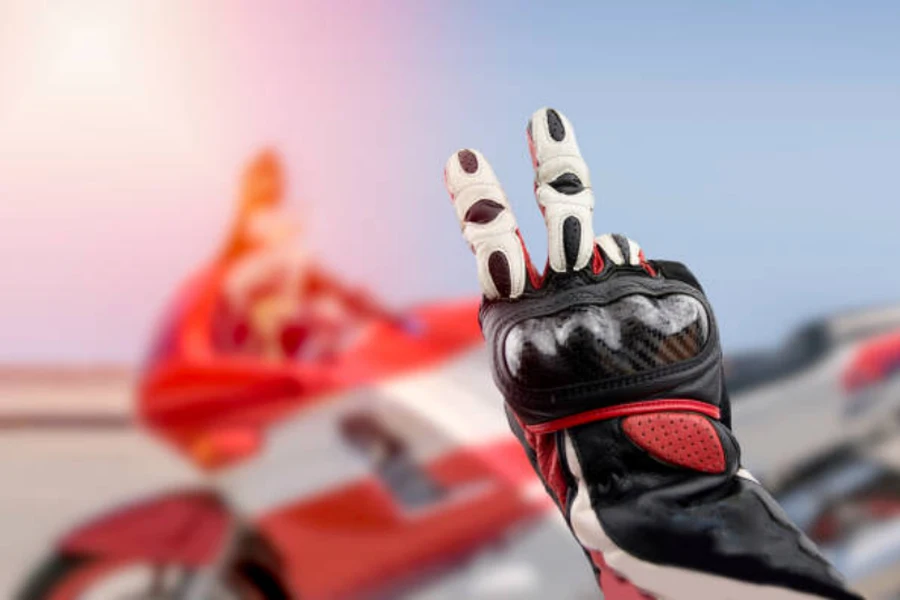
Current market dynamics
The racing glove market is experiencing a dynamic shift, reflecting a blend of tradition and innovation. As of the latest insights, the industry is not just growing; it’s evolving, with increasing public safety regulations, innovations in glove technology, and the growing popularity of motorsports events driving this change. The market’s expansion is fueled by a heightened awareness of safety and performance, leading to a demand for more advanced racing gloves. These gloves are no longer just about protection; they’re about enhancing the racing experience, with features designed to improve grip, control, and overall performance.
Manufacturers are responding to these demands with a range of products that cater to different segments, from professional racers to enthusiastic gamers. The market is also seeing a surge in specialized gloves for different racing disciplines, each with its unique set of requirements and preferences. This diversification is a response to a more informed and discerning consumer base that knows exactly what it wants and needs from its racing gear.
Influential factors and future projections

Several factors are shaping the future of the racing glove market. Innovations in materials and design are at the forefront, with manufacturers experimenting with everything from improved heat resistance to enhanced tactile feedback. The adoption of new technologies is not just a trend; it’s a response to a market that demands the best in safety and performance.
Sustainability is another key driver, with an increasing number of manufacturers investing in eco-friendly materials and production methods. This shift is not just about meeting regulatory requirements; it’s about appealing to a consumer base that values ethical and sustainable practices.
Looking ahead, the market is set to continue its growth trajectory. The motorcycle market, which includes racing motorcycles, is projected to grow from a market volume of US$136.30 billion in 2023 to US$164.20 billion by 2028. This growth represents an annual growth rate (CAGR) of 3.79% from 2023 to 2028. The largest segment within this market is on-road motorcycles, which is projected to have a market volume of US$96.00 billion in 2023. The unit sales of motorcycles are expected to reach 60.01 million units by 2028. This growth is expected to be driven by continued innovation, an expanding consumer base, and a growing recognition of the critical role of safety gear in motorsports. As the industry evolves, so too will the products, with future racing gloves likely to be more advanced, more specialized, and more in tune with the needs and expectations of racers around the world.
Key considerations for choosing racing gloves
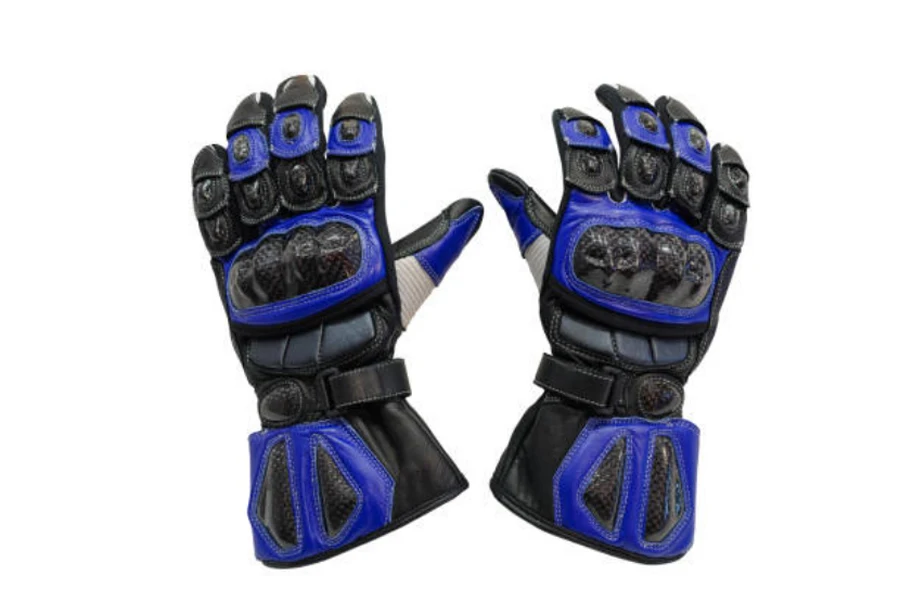
Material and construction
Selecting the right racing gloves involves a deep understanding of the materials and construction techniques that directly impact their performance, durability, and comfort. The materials used in racing gloves, such as high-grade leather, Nomex, Kevlar, and advanced synthetic blends, are chosen for their specific properties. For instance, leather is prized for its durability and natural grip, while Nomex is known for its excellent fire-resistant qualities, crucial in protecting drivers from high temperatures and flames.
The construction of racing gloves is equally important. For example, the Dainese Full Metal 6 gloves incorporate titanium and carbon fiber inserts, providing superior protection without compromising flexibility. The balance between thickness and flexibility is crucial; too thick, and the driver loses essential tactile feedback; too thin, and the gloves won’t provide adequate protection. This balance ensures drivers can sense the steering wheel’s weight and texture, allowing for precise control and quick adjustments.
The stitching and seams of the gloves also play a significant role. Outer seam gloves, growing in popularity, feature stitching on the outside to minimize friction and pressure points, enhancing comfort and reducing the risk of blisters during long races. Inner seam gloves, while less common, offer a closer fit but may create friction between the fingers and the steering wheel, leading to potential discomfort over time.
Entry-level gloves like the OMP FIRST EVO Racing Gloves and Alpinestars TECH-1 START V2 Racing Gloves offer a good balance between quality and affordability. In contrast, professional-grade options like the Alpinestars TECH-1 ZX V2 Gloves and OMP ONE EVO X Racing Gloves provide advanced features and materials for those requiring the highest performance and safety standards.
In conclusion, the material and construction of racing gloves significantly influence their effectiveness. The right combination of materials ensures durability and protection, while the construction and design provide the necessary comfort and tactile feedback. Whether for a novice or a professional, understanding these aspects is crucial in selecting gloves that offer the best balance of safety, control, and comfort.
Design and ergonomics
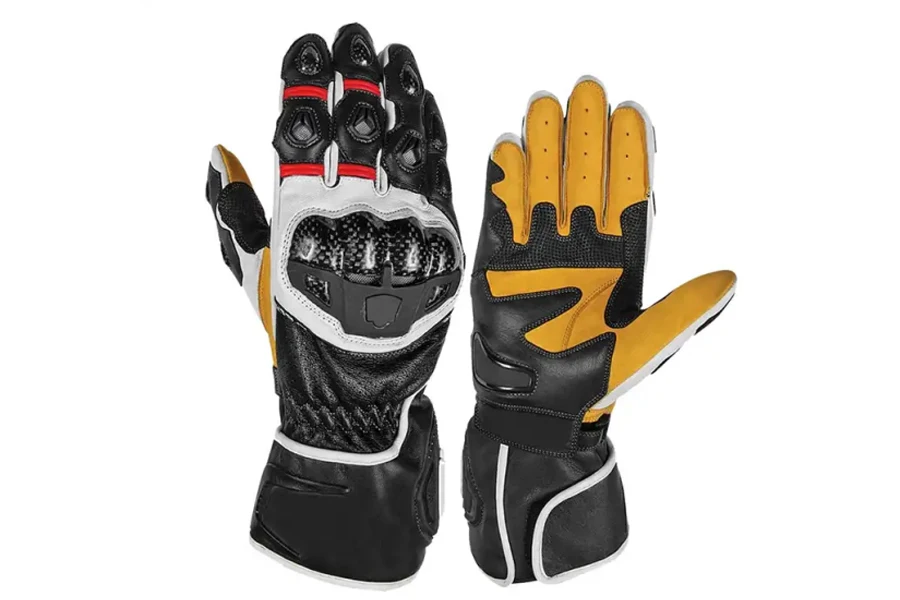
The design and ergonomics of racing gloves are pivotal in enhancing control and reducing fatigue, directly impacting a driver’s performance and endurance. Ergonomically designed gloves conform to the natural shape of the hand, reducing unnecessary stress and strain. For instance, gloves with pre-curved fingers mimic the hand’s natural resting position, reducing material bunching and improving grip on the steering wheel. This design minimizes the effort required to maintain a firm grip, thereby reducing fatigue over long periods.
The placement of seams significantly affects comfort and control. Outer seam gloves, which feature stitching on the outside, are increasingly popular for their ability to minimize friction and pressure points, enhancing comfort and reducing the risk of blisters during long races. On the other hand, inner seam gloves offer a closer fit but may create friction between the fingers and the steering wheel, potentially leading to discomfort over time.
Material placement and type also play a crucial role. Silicone printed grip panels, for example, provide a ‘grippy’ surface without adding bulk, maintaining glove lightness and flexibility. This feature is particularly beneficial for drivers who require high levels of dexterity and tactile feedback. Additionally, the use of four-way stretch materials like spandex in certain glove areas can provide a full range of movement, further enhancing dexterity and comfort.
Safety standards and certifications
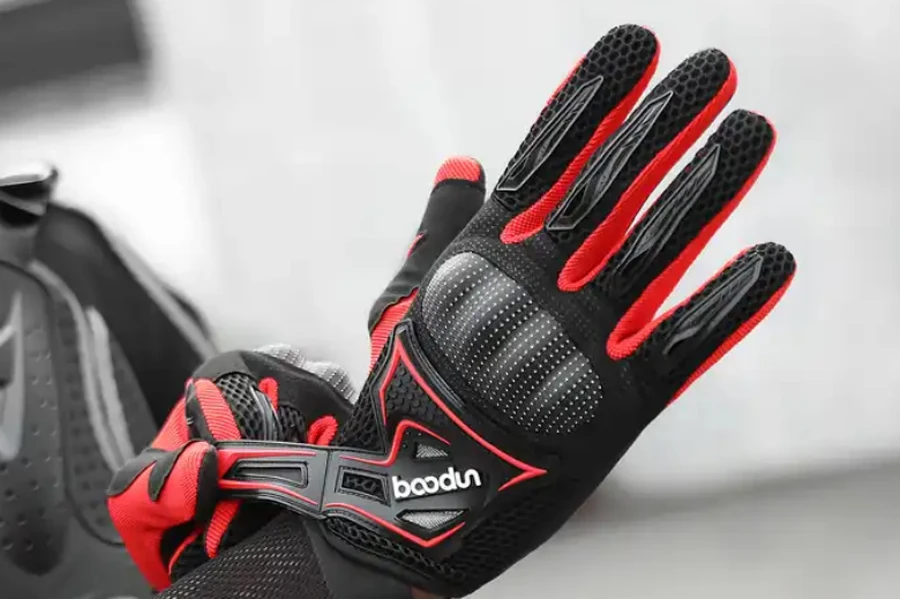
Safety standards and certifications are critical indicators of a racing glove’s quality and safety. These standards ensure that the gloves have undergone rigorous testing and meet specific requirements for protection and performance. The SFI (Safety Foundation, Inc.) and FIA (Fédération Internationale de l’Automobile) are two of the most recognized certifying bodies in motorsports. Gloves with an SFI 3.3/5 rating, for instance, are often constructed with multiple layers of fire-retardant material, offering a higher level of protection against heat and flames.
The SFI certification process involves specific temperature and flame exposure tests, translating to a Thermal Protective Performance (TPP) value. This value provides an approximate time window of protection the gloves can offer in high-heat conditions. For example, SFI 3.3/5 certified gloves are made from materials like leather, suede, and a fire-retardant underlayer, typically Nomex, which can withstand direct and indirect heat exposure for a specified duration.
When selecting racing gloves, it’s essential to consider the type of racing and the associated risks. For high-speed motorsports where the risk of fire is more significant, gloves with higher SFI ratings and additional features like extended gauntlets for wrist protection are advisable. For less intense forms of racing, a lower SFI rating might be sufficient. Regardless of the specific rating, choosing gloves that meet recognized safety standards is crucial for ensuring maximum protection and compliance with racing regulations.
In conclusion, when selecting racing gloves, considering the design and ergonomics for enhanced control and reduced fatigue, along with adhering to safety standards and certifications for maximum protection, is crucial. The right pair of gloves will not only improve performance but also ensure the driver’s safety, allowing them to focus on the race with confidence.
Spotlight on top racing gloves and their features

Leading models for 2024
As 2024 approaches, the racing glove market is showcasing some standout models known for their performance, comfort, and safety features. These gloves are the result of continuous innovation and feedback from the racing community, designed to meet the exacting standards of professional drivers.
Alpinestars – Tech-1 Start V2
The Alpinestars Tech-1 Start V2 is a testament to Alpinestars’ commitment to providing quality at an affordable price. Designed for those who frequently replace their gear or seek a cost-effective entry into racing gloves, the Start V2 doesn’t skimp on features. It boasts inside seams on all five fingers, enhancing the glove’s fit and feel, crucial for maintaining control during intense races. The silicon printed zone on the palm is not just for show; it significantly improves flexibility and grip, allowing for nuanced control over the vehicle. The glove’s construction focuses on reducing weight without sacrificing protection, making it a favorite among racers who demand performance and comfort.
Sparco – Land +
The Sparco Land + is an entry-level glove that punches above its weight. It offers a solid balance between thickness and breathability, making it ideal for beginner racers or as a reliable backup pair. The redesigned palm with high-grip silicon printed fingertips and palm isn’t just about improving grip; it’s about enhancing the driver’s feedback from the steering wheel. The ergonomic palm design and reinforced stitching conform to the hand’s natural position, reducing fatigue and ensuring a comfortable fit. Its wide range of sizes makes it accessible to a diverse group of drivers, ensuring that everyone can find their perfect fit.
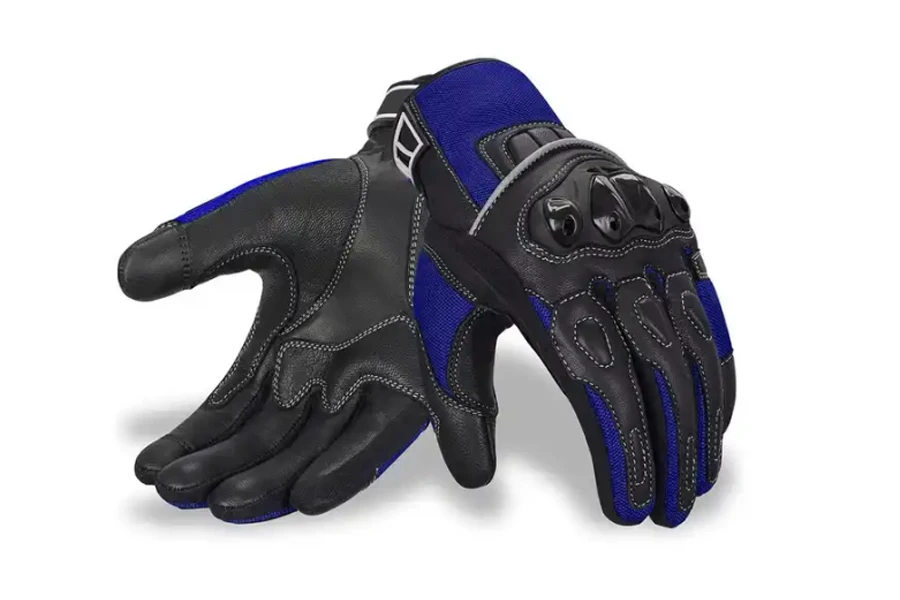
Sparco – Lap
The Sparco Lap Racing Glove is a mid-range powerhouse combining affordability with high-end features. It’s designed for durability and breathability, catering to racers who don’t want to compromise on performance or comfort. The unique hybrid finger stitching, which employs external stitching on the palm side of the finger, addresses the common issue of pressure points, enhancing comfort during long races. The traditional internal stitching on the upper side ensures a secure fit, making the Lap glove a well-rounded choice for serious racers.
Alpinestars – Tech-1 ZX V2
The Alpinestars Tech-1 ZX V2 is tailored for drivers with wider palms, offering a generous amount of material and stretch for a snug yet flexible fit. This glove is about attention to detail; the placement of the inside seam on the thumb and outboard on the other four fingers is a deliberate design choice to enhance the driver’s experience. The touch-compatible fingers are a nod to modern needs, allowing drivers to use electronic devices without removing their gloves. The open cuff design with a fully elasticated wrist ensures that putting on and taking off the gloves is as smooth as possible, a small but significant detail that racers appreciate.
OMP – One Evo X
The OMP One Evo X stands at the pinnacle of auto racing gloves, offering a combination of comfort, performance, and style. Its outer layer mesh design is not just for aesthetics; it plays a crucial role in heat management, keeping the driver’s hands cool under pressure. The pre-curved and fitted shape of the glove provides a snug fit, crucial for maintaining control at high speeds. The silicon gripper palm is about more than just grip; it offers exceptional tactility, allowing drivers to feel every nuance of their vehicle’s response. OMP’s dedication to combining form and function is evident in the One Evo X, making it a top choice for serious racers.
In conclusion, the leading models for 2024 from Alpinestars, Sparco, and OMP are more than just gloves; they are a blend of innovation, design, and technology. Each model brings its unique set of features to the table, catering to a wide range of preferences and requirements. Whether it’s the affordable quality of the Tech-1 Start V2, the ergonomic design of the Land +, the hybrid stitching of the Lap, the wide-palm fit of the Tech-1 ZX V2, or the superior heat management of the One Evo X, these gloves are designed to enhance performance, comfort, and safety on the track.
Comparative analysis of features
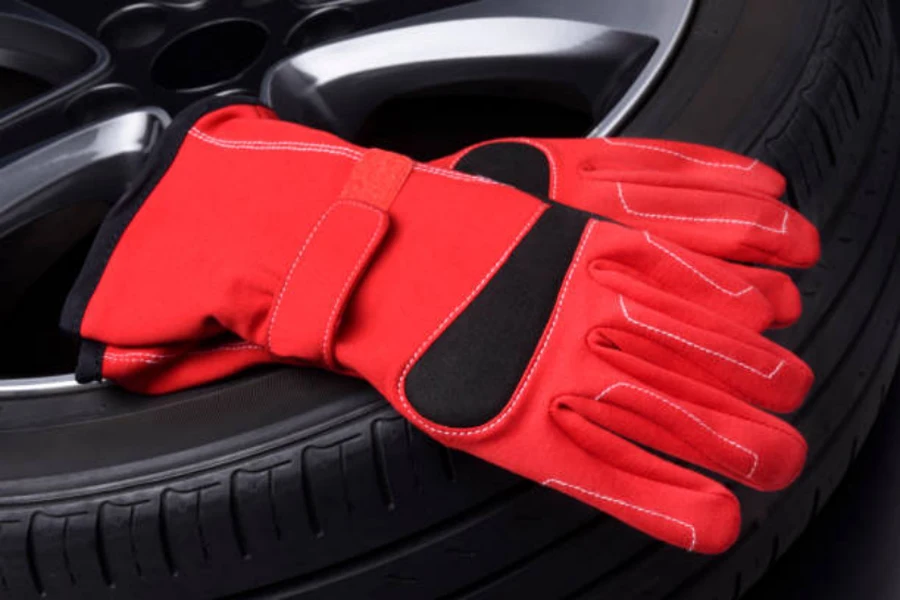
When comparing the top racing gloves for 2024, it’s essential to delve into the specific features that set each apart. By examining these gloves based on different features and usage scenarios, we can better understand what makes each model unique and how they cater to various needs.
Grip and control
Alpinestars Tech-1 Start V2: The silicon printed zone on the palm of the Start V2 is designed for drivers who prioritize a direct and tactile feel. This feature enhances flexibility and grip, allowing for precise control over the vehicle’s inputs. It’s ideal for racers who rely on subtle hand movements to navigate tight corners and high-speed sections.
Sparco Land +: With its high-grip silicon printed fingertips and palm, the Land + is engineered for drivers who need consistent and reliable grip, especially in varying track conditions. The ergonomic palm design ensures that the grip doesn’t compromise comfort, making it suitable for endurance races where prolonged contact with the steering wheel is required.
OMP One Evo X: The silicon gripper palm of the One Evo X offers exceptional tactility and a secure grip, making it perfect for drivers who face diverse track conditions and require a glove that can adapt to different surfaces and temperatures without losing performance.
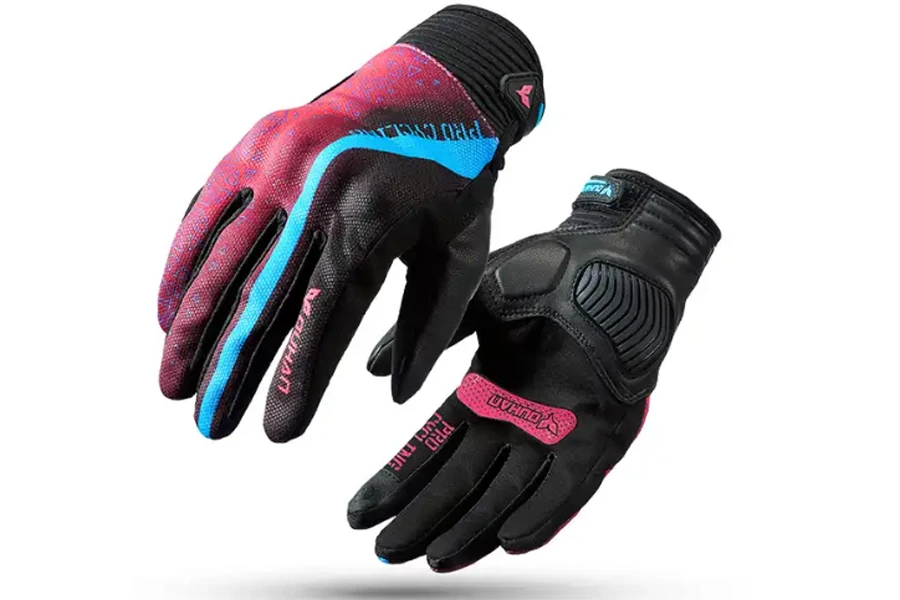
Comfort and ergonomics
Sparco Lap: The hybrid finger stitching in the Lap glove addresses comfort directly by eliminating pressure points on the palm side of the finger. This design is particularly beneficial for drivers in longer races where continuous pressure can lead to discomfort and fatigue.
Alpinestars Tech-1 ZX V2: Designed for drivers with wider palms, the Tech-1 ZX V2’s generous material and stretch provide a snug yet flexible fit. The thoughtful placement of seams enhances the ergonomic experience, ensuring that drivers with larger hands don’t feel restricted or uncomfortable during long stints behind the wheel.
Heat management and breathability
OMP One Evo X: The outer layer mesh design of the One Evo X stands out for its excellent heat management. This feature is crucial for maintaining comfort and focus during intense races, especially in warmer climates or during summer races where cockpit temperatures can soar.
Durability and longevity
Alpinestars Tech-1 Start V2: The Start V2’s construction focuses on reducing weight without sacrificing protection. Its durable materials and design are meant for racers who frequently replace their gloves due to wear and tear, offering a balance between longevity and performance.
Sparco Land +: Known for its solid performance and durability, the Land + is an excellent choice for beginner racers or as a reliable backup pair. Its construction is designed to withstand the rigors of racing while providing consistent performance over time.
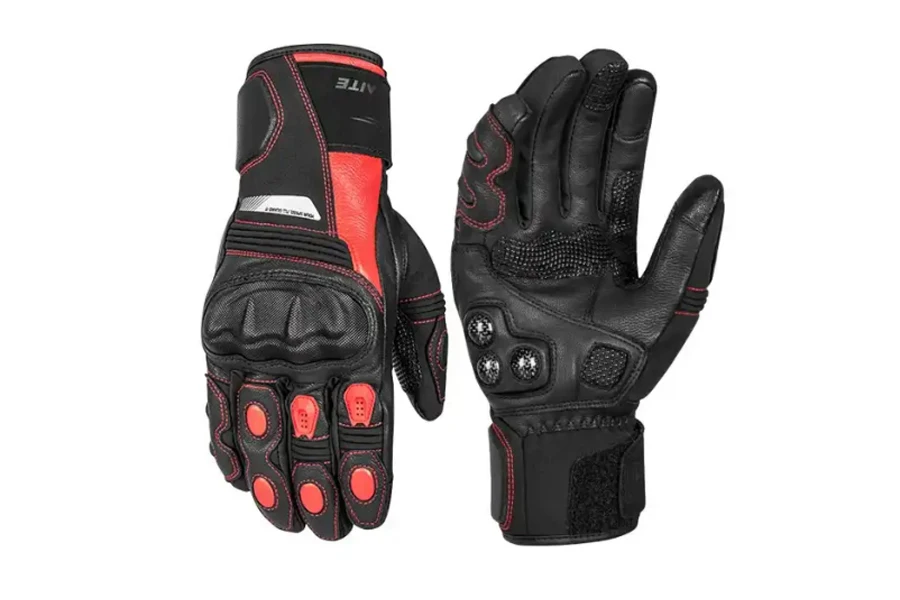
Specialized features
Alpinestars Tech-1 ZX V2: The touch-compatible fingers of the Tech-1 ZX V2 are a nod to modern needs, allowing drivers to use electronic devices without the inconvenience of removing their gloves. This feature is particularly beneficial for drivers who need to make quick adjustments to in-car systems or communicate with their team during a race.
OMP One Evo X: The pre-curved and fitted shape of the One Evo X provides a snug fit, crucial for maintaining control at high speeds. This feature, combined with the silicon gripper palm, offers drivers a glove that not only fits well but also enhances their connection with the vehicle.
In conclusion, when comparing the top racing gloves for 2024, it’s clear that each model has been designed with specific scenarios and driver needs in mind. From the tactile grip of the Alpinestars Tech-1 Start V2 to the ergonomic comfort of the Sparco Lap, the heat management of the OMP One Evo X, and the specialized features of the Alpinestars Tech-1 ZX V2, each glove offers a unique set of features that cater to different aspects of racing performance and comfort. Understanding these differences is key to selecting the right glove that will enhance a driver’s performance and safety on the track.
Concluding thoughts
Selecting the right racing gloves is a nuanced decision that hinges on understanding specific needs and the unique features of each model. From the tactile grip and ergonomic design to advanced safety standards and heat management, each aspect plays a crucial role in enhancing performance and safety. As industry professionals explore options like the Alpinestars Tech-1 Start V2 or the OMP One Evo X, the focus should remain on how these gloves align with the racing conditions and the driver’s personal preferences. Ultimately, the best choice is one that offers a harmonious blend of comfort, control, and protection, ensuring drivers can perform at their best while staying safe on the track.
